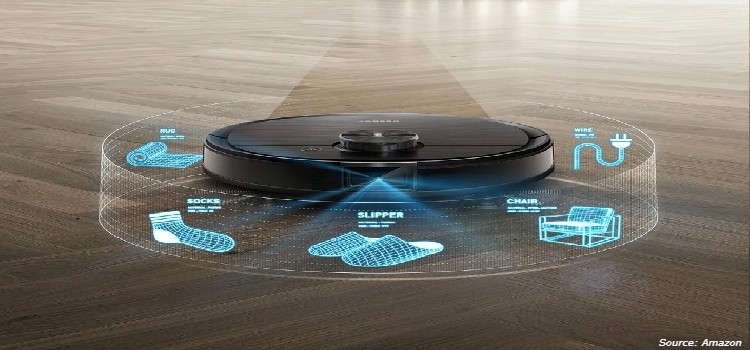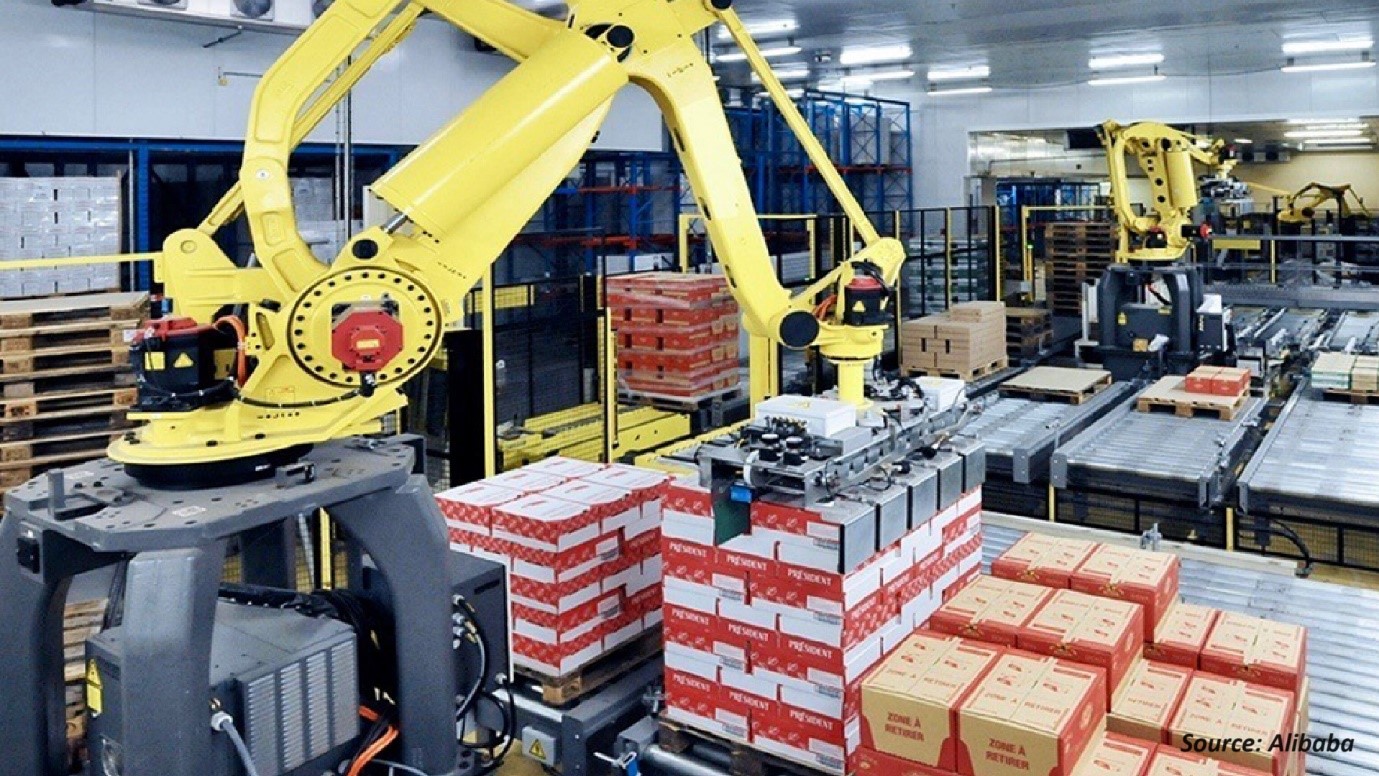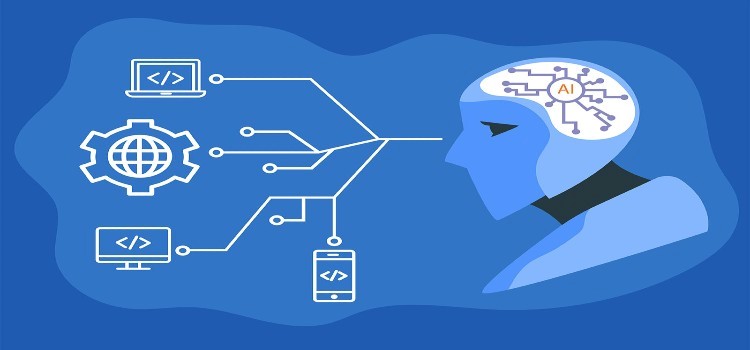
South Korea Robot Software Market by Software Type (Recognition Software, Simulation Software, Predictive Maintenance Software, Communication Management Software, and Data Management And Analysis Software), by Robot Type (Service Robots and Industrial Robots), by Deployment Mode (On-premise and On-demand), by Organization Size (Large Enterprises and Small and Medium-sized Enterprises (SMEs)), and by Industry Vertical (Banking, Financial Services, and Insurance (BFSI), Automotive, Retail and E-Commerce, Aerospace & Defense, Healthcare and Life Sciences, Transportation and Logistics, Manufacturing, Telecommunications and IT, Academia and Research, Media & Entertainment, and Others) – Opportunity Analysis and Industry Forecast, 2024–2030
Industry: ICT & Media | Publish Date: 09-Jul-2024 | No of Pages: 126 | No. of Tables: 92 | No. of Figures: 57 | Format: PDF | Report Code : N/A
South Korea Robot Software Market Overview
The South Korea Robot Software Market size was valued at USD 418.3 million in 2023, and is expected to reach USD 2147.5 million by 2030, with a CAGR of 25.2% from 2024 to 2030. Robot software comprises a suite of programs and algorithms tailored to oversee and manage the operations of robots or robotic systems across various industries, including logistics, manufacturing, entertainment, healthcare, and more.
Its functionality encompasses several vital components. Firstly, it orchestrates and coordinates the movements and behaviors of robots, ensuring precise and efficient task execution by issuing detailed commands to robotic components such as motors and actuators. Moreover, robot software assumes a crucial role in interpreting data from a diverse array of sensors embedded within robots, encompassing cameras, Light Detection and Ranging (LIDAR) sensors, and tactile sensors. This data interpretation provides indispensable environmental feedback that enables robots to perceive and comprehend their surroundings accurately.
An essential aspect of robot software lies in its capacity to make intelligent decisions utilizing artificial intelligence (AI) and machine learning (ML) algorithms. Through the analysis of data from sensors, adherence to predefined rules, or learning from past experiences, robots can adapt to changing conditions, allowing them to operate autonomously and adjust their actions in real-time. Furthermore, robot software facilitates communication and networking among robots, enabling collaboration for complex tasks or data exchange with a central control system. This interconnectedness enables synchronized operations in industrial environments, leading to enhanced efficiency and productivity.
Increasing Adoption of Industrial Robots Propels the Growth of the South Korea Robot Software Market
The rising adoption of industrial robots serves as a significant catalyst driving the expansion of the robot software market in the country. Across diverse industries, the integration of automation into operations is becoming increasingly prevalent, resulting in a parallel increase in demand for efficient robot software solutions. Industrial robots are now utilized across a broad spectrum of tasks, spanning manufacturing, assembly, logistics, and warehousing.
In order to fully leverage the capabilities of these robots and seamlessly integrate them into existing workflows, sophisticated software solutions are essential. These software platforms facilitate programming, control, optimization, and coordination of robotic systems, thereby enhancing their overall performance and productivity. Consequently, the growing adoption of industrial robots stimulates the need for advanced robot software, thereby propelling growth in the robot software market.
Growing Focus on Safety and Compliance Propels the South Korea Robot Software Market
The growing emphasis on safety and compliance acts as a significant driver propelling the growth of the South Korea robot software market. Heightened concerns about workplace safety and regulatory compliance lead organizations to prioritize the adoption of robot software solutions ensuring safe and compliant operation of robotic systems.
Robot software plays a crucial role in implementing safety features, risk assessment tools, and compliance frameworks, mitigating the risk of accidents and ensuring adherence to industry regulations and standards. Furthermore, as the regulatory landscape evolves and becomes more stringent, there's an increased demand for robot software enabling real-time monitoring, reporting, and documentation of safety and compliance metrics.
By addressing these concerns and providing robust solutions for safe and compliant operation, the growing focus on safety and compliance drives the adoption of robot software across industries, stimulating South Korea robot software market growth.
Cybersecurity and Data Protection Concerns Associated with Robot Software Restrain the Growth of the South Korea Market
Cybersecurity and data protection concerns related to robot software pose significant challenges to market growth in the country. As robots become more interconnected within digital ecosystems, they are increasingly vulnerable to cyber threats such as unauthorized access, data breaches, and malware attacks.
Inadequate cybersecurity measures within robot software can compromise sensitive data, intellectual property, and operational integrity, leading to potential financial losses and reputational harm for organizations. Additionally, with the rise of IoT-enabled robots and the collection of extensive data, there is a heightened risk of data privacy violations and regulatory non-compliance.
Consequently, organizations are hesitant to adopt robot software solutions without robust cybersecurity features and data protection mechanisms, hindering South Korea robot software market expansion. Addressing these concerns through enhanced cybersecurity measures, encryption protocols, and compliance frameworks is crucial to foster trust and encourage broader adoption of robot software across various industries.
The Expansion of Robotics-as-a-Service Creates New Opportunities in the South Korea Market
The expansion of Robotics-as-a-Service (RaaS) creates fresh trends in the South Korea robot software market by offering a more accessible and cost-effective pathway for organizations to implement robotics solutions in the country. RaaS models allow businesses to acquire robotic hardware, software, and related services through subscription plans, eliminating the necessity for significant upfront investments in capital-intensive assets.
This approach reduces barriers to entry, particularly for small and medium-sized enterprises (SMEs) or entities with constrained budgets, enabling them to harness robotics technology without the financial burdens of ownership. Additionally, RaaS models often include maintenance, support, and software updates as part of the subscription package, providing additional value and simplifying the deployment process.
Through democratizing access to robotics technology and fostering a pay-as-you-go model, the expansion of RaaS creates new South Korea robot software market opportunities, driving adoption across various industries and stimulating innovation in robot software solutions.
Competitive Landscape
Several key players operating in the South Korea robot software industry include IBM, NVIDIA, ABB Ltd., FANUC, Teradyne, Inc., H2O.ai, Brain Corp, CloudMinds, Clearpath Robotics, and Neurala, Inc. These market players are adopting strategies to maintain their dominance in the market.
South Korea Robot Software Market Key Segments
By Software Type
-
Recognition Software
-
Simulation Software
-
Predictive Maintenance Software
-
Communication Management Software
-
Data Management and Analysis Software
By Robot Type
-
Service Robots
-
Ground
-
Aerial
-
Underwater
-
-
Industrial Robots
-
Traditional Industrial Robots
-
Articulated Robots
-
SCARA Robots
-
Parallel Robots
-
Cartesian Robots
-
Other Robots
-
-
Collaborative Industrial Robots
-
By Deployment Mode
-
On-premise
-
On-demand
By Organization Size
-
Large Enterprises
-
Small and Medium-sized Enterprises (SMEs)
By Industry Vertical
-
Banking, Financial Services, and Insurance (BFSI)
-
Automotive
-
Retail and eCommerce
-
Aerospace & Defense
-
Healthcare and Life Sciences
-
Transportation and Logistics
-
Manufacturing
-
Telecommunications and IT
-
Academia and Research
-
Media & Entertainment
-
Others
REPORT SCOPE AND SEGMENTATION:
|
Parameters |
Details |
|
Market Size in 2023 |
USD 418.3 Million |
|
Revenue Forecast in 2030 |
USD 2147.5 Million |
|
Growth Rate |
CAGR of 25.2% from 2024 to 2030 |
|
Analysis Period |
2023–2030 |
|
Base Year Considered |
2023 |
|
Forecast Period |
2024–2030 |
|
Market Size Estimation |
Million (USD) |
|
Growth Factors |
|
|
Companies Profiled |
10 |
|
Market Share |
Available for 10 companies |
|
Customization Scope |
Free customization (equivalent up to 80 working hours of analysts) after purchase. Addition or alteration to country, regional, and segment scope. |
|
Pricing and Purchase Options |
Avail customized purchase options to meet your exact research needs. |
KEY PLAYERS
-
IBM
-
NVIDIA
-
ABB Ltd.
-
FANUC
-
Teradyne, Inc.
-
H2O.ai
-
Brain Corp
-
CloudMinds
-
Clearpath Robotics
-
Neurala, Inc.




 Speak to Our Analyst
Speak to Our Analyst


































